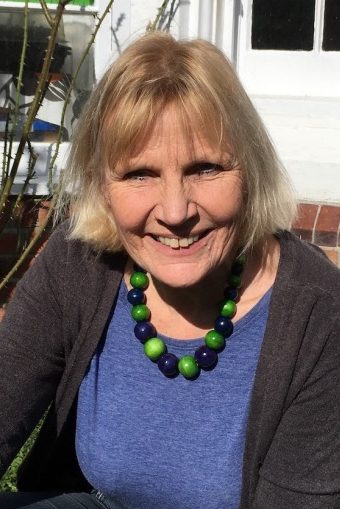
We really hope we’ve talked you into growing some vegetables this summer, and Laura has expounded on the subject of fruit.
This is the last episode of our Beginner’s Veg course but if you enjoyed it, please think about buying our pocket-sized book that accompanies the course – the link is at the end.
Let’s try some herbs now! Most are a cinch to cultivate, and they’re just as great for containers, hanging baskets, planters, balcony window-boxes etc as they are for a pretty little herb garden by the back-door……………………….
1. What to grow
Herbs can be annuals (start, flower and die in one season), biennials (start in one year, flower and die the next year) or perennials (come up year after year). Amongst the annuals there are such treasures as basil, dill and coriander. The biennials include parsley and chervil. The perennial herbs comprise things like chives, fennel, sage, mint, tarragon, lavender, thyme and marjoram.
There aren’t many trees/shrubs that we use as herbs, but bay is one – a tough, evergreen perennial that can grow into a good-sized tree or be topiarised into a neat lollipop in a pot by the front door. Rosemary is another shrub that’s a delight to have in the garden or on a patio or wall – for its aroma, its prettiness and its huge attraction for pollinating insects of all kinds.
Almost all of these have lots of different named varieties, including some interesting and lovely-sounding things like ‘Eau de Cologne’ mint and basil ‘Red Boza’, but the basic species ones are great to grow, just as they are, too. Sweet basil ‘Genovese’ is perfect to have with tomatoes or in pesto, coriander ‘Leisure’ or ‘Cilantro’ are less likely to bolt (run up to flower and seed) than the ordinary kind, but you can also eat the yummy green seeds! Dill ‘Nano’ is good for pots or smaller spaces, being more bushy and compact than usual.
Parsley makes a lovely edging for a flower bed; you can grow a great range of herbs in planting pockets hanging on a wall or trellis.
Think about the flavours that you like, but also what you can source in these trying times – while we can’t browse in garden centres, and many mail-order plant companies are struggling, it may be a question of seeing if gardening friends can send you seeds, plant-divisions etc. or leave them at your front-door for you. The supermarkets might also still have some herb- seeds or fresh herbs that you can take home to grow on. If you do buy supermarket herbs, please do be very careful because they have been deliberately grown to produce fabulous lush leaves, but their roots may be very weak and feeble – they will need a lot of TLC, to coax them into being good garden plants.
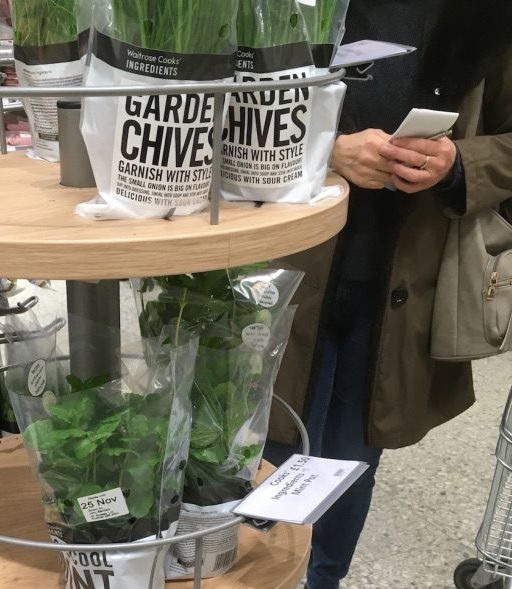
2. How to start herbs off
Herbs are basically sun-lovers, and generally like a light, well-drained soil. Try and dig in some grit or sand if your soil is full of thick clay. They do like to have had some well-rotted manure or compost dug into the soil before planting, if possible, but don’t go bonkers with that. Remember that most come from the Med and don’t need or like really rich or soggy soil.
Some like coriander, chervil, parsley or mint are okay in a shadier situation – in fact, mint can go even more crazy in shade than it does in sun – be careful!
Sow the seeds of basil, chives and parsley indoors in pots or trays of compost on a sunny windowsill. Parsley prefers things a bit warmer, if you can manage it, and I’m sure my sisters will remember Dad having plastic containers of parsley seeds germinating in moist tissue paper above the old Aga…..
Sprinkle them thinly on the surface of moist compost, cover them with a fine layer of compost, vermiculite or grit and leave to germinate. If you’re finding it tricky to deal with sprinkling fine seed, one tip is to put some seeds into the fold of a piece of folded paper and tap the paper gently as it you move it over the surface of the compost.
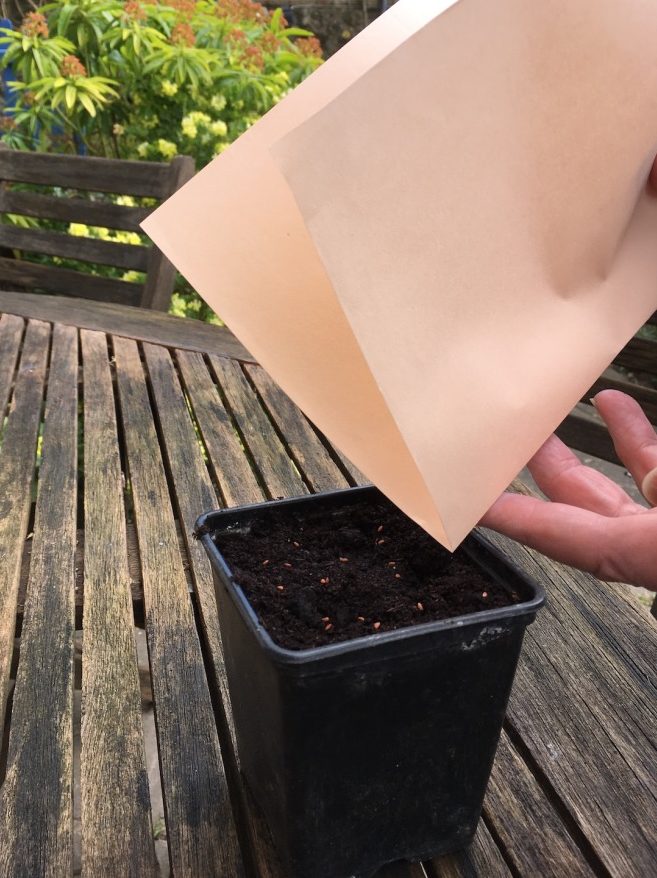
Do consider sowing more seeds than you actually want for yourself, and offering to share some of the seedlings with someone else who would like to have a go with herbs – or indeed, any other veg or flowers you’re growing.
Coriander, dill and chervil can be sown outdoors where they are to grow, from early April onwards. And since these grow rapidly, it’s a great idea to sow some more in a couple of weeks – and maybe some more a couple of weeks after that………..! Again sow the seeds thinly and no more than an inch deep.
Once the inside seedlings have germinated, pot them up into individual modules, and gradually ‘harden them off’ by leaving them outside during the day, and bringing them inside at night. A word of warning about parsley – it gets grumpy about being transplanted, so a good tip here is to sow 2-3 seeds into individual pots from the get-go, and plant the whole potful out as a unit.

It is very important to do this hardening off process with growing herbs that you bought at a supermarket too.
Plant them out into sunny positions in late April or May, in raked fine soil which you have already watered. Keep the plants watered well until they are growing strongly. After that, twice a week into the soil not over the plants themselves should be fine. In fact, there is a strong school of thought that maintains you should keep herbs starved and thirsty, in order to get the best flavour from them, but I’m sure a happy medium can be struck, and is certainly easier on the eye! They are much more likely to bolt, if they’re bone-dry, too.
Dividing up perennial herbs is often done in late summer/ early autumn but can be done now and is a great way to share plants. Dig up a clump of marjoram, mint or thyme, pull rooted pieces off to pot up or plant elsewhere.
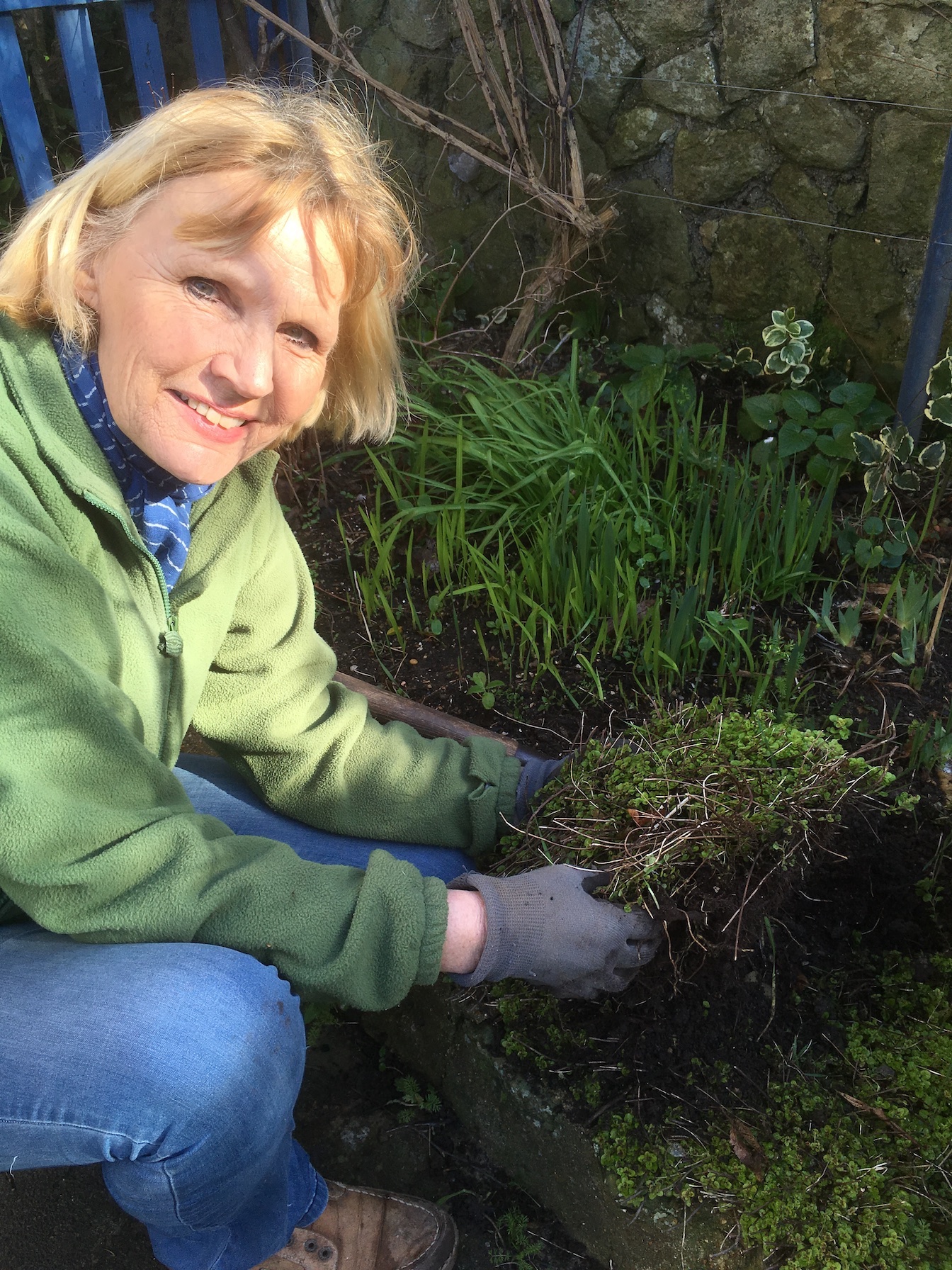
Cuttings of woody herbs like sage and rosemary are usually taken in late summer, but why not have a go, anyway? Pot up 6″ bits into gritty, moist compost, fix a clear plastic bag over the top with a rubber band, and keep them on a window-sill – they might just take, and if they don’t, you haven’t lost anything anyway! I have always been a great fan of the ‘Have a Go’ School of Gardening, of which sister Caroline is a Founder Member.
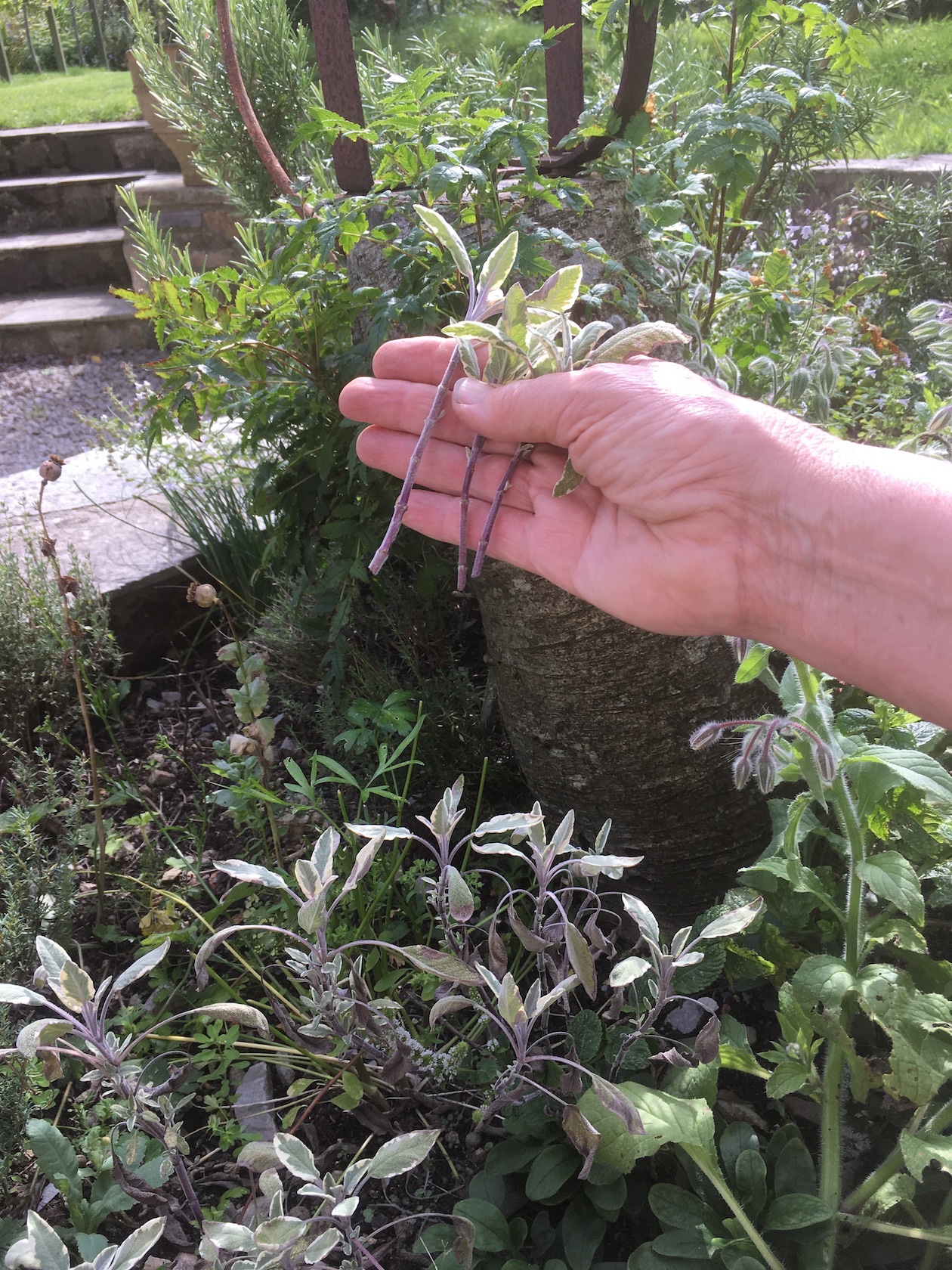
Mint is gorgeous to have handy, but it is a rampant coloniser in the garden, so it is far better to grow this in a pot by itself. We actually sink the pot in the herb garden, so that it is with the other herbs just outside the kitchen, but won’t take over the whole bed. If you do this, you just have to make sure that it doesn’t dry out too much.
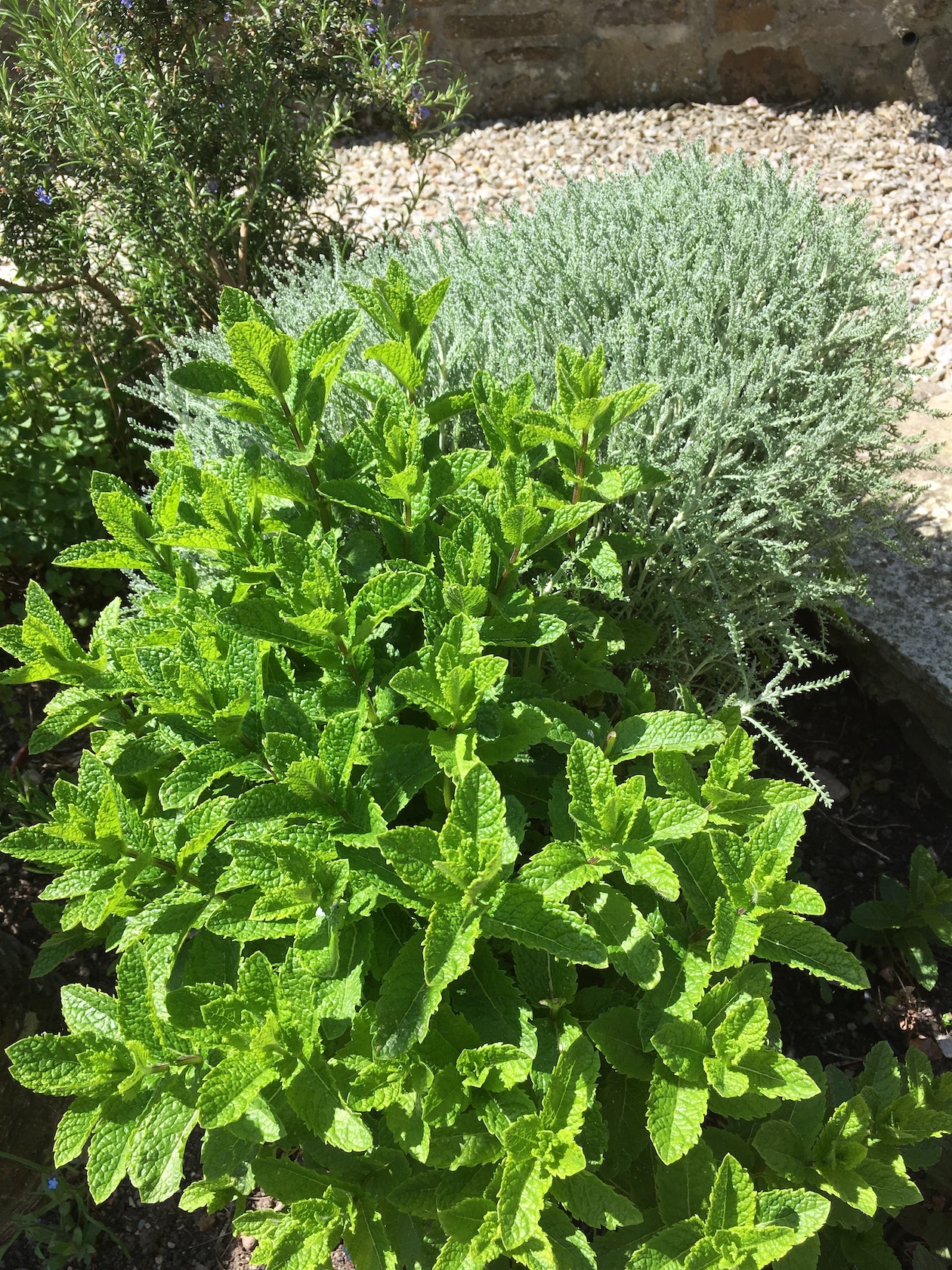
3. Growing on
Herbs are easy to maintain on the whole. Pinch out the tips of basil stems to make the plants bushier (Laura would drone on about apical buds at this point……). Trim back thyme lightly after it’s finished flowering. Enjoy the heady scents and all the lovely insects your herbs are attracting. Cut back the flowers of perennial herbs in summer to encourage new leaves, especially the spent flower-stems of lavender – indeed, a friend of mine takes the electric hedge-trimmer to hers………
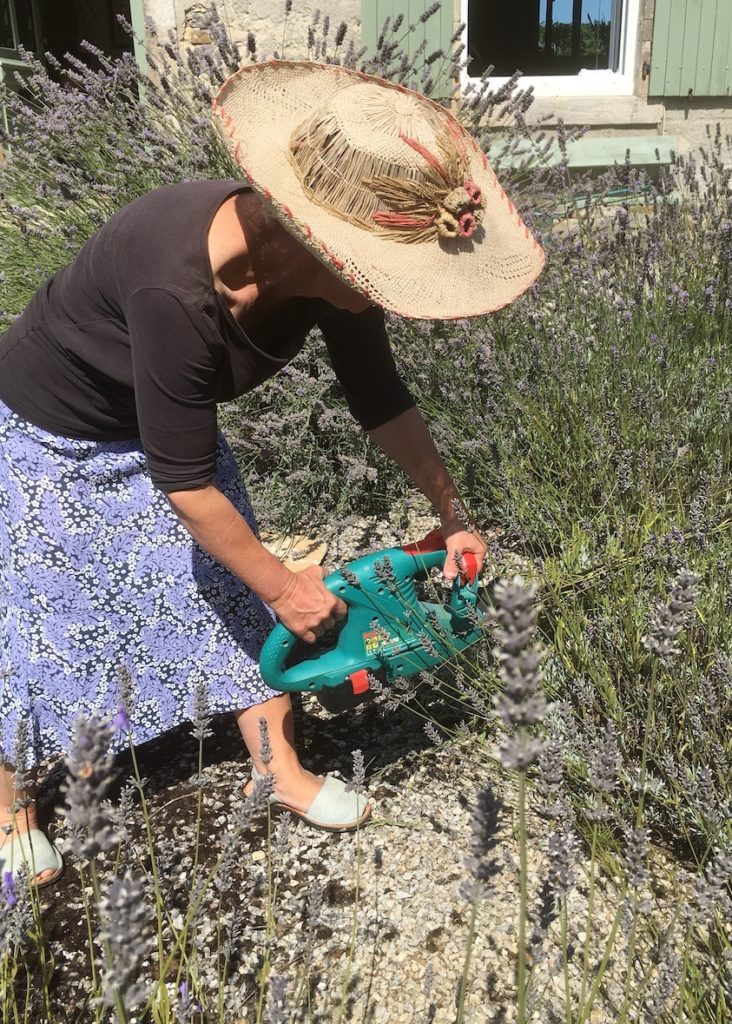
4. Harvesting
There are so many uses for herbs – cookery of all kinds, scented oils, lavender bags, soaps……the list is almost endless…
You can be picking rocket, coriander or dill as soon as three weeks after sowing the seed!
When picking your herbs, it helps to take leaves from the outside of the plant to encourage new leaves to grow in the centre, and some gardeners reckon they are fuller of their essential oils in the morning than at other times of day (we just pick ’em when we need ’em, though…………..)
If you get a glut, you can freeze herbs (what about chopped herbs in water in ice-trays?) or dry them, and at the end of the summer, you can pot up chives, parsley, mint etc. to bring indoors to pick sparingly through the winter to liven up your dishes.
Really. What’s not to like about getting going on herb-growing. I do hope you’ll have a bash at it this year!
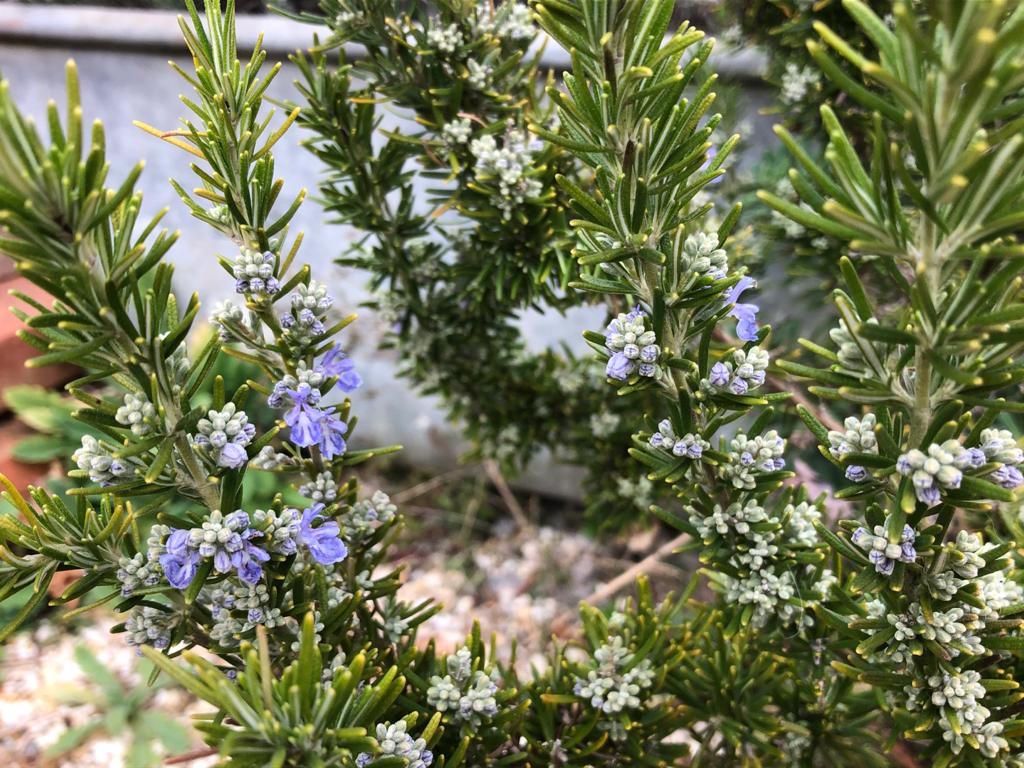
If you missed the first 11 posts in our Beginners Veg series, you can read them here:
3. Broad beans
5. Dwarf runner beans, peas and carrots
6.You say tomatoes – I say terrific
7. Salad crops
9. Winter veg – why you need a PLAN
10.Today it’s chard, spinach and kale
11. What about some fabulous fruit?
You can have the whole DigYourOwnaForCorona veg growing campaign at your fingertips by getting this, our handy pocket-sized book at our online shop here.
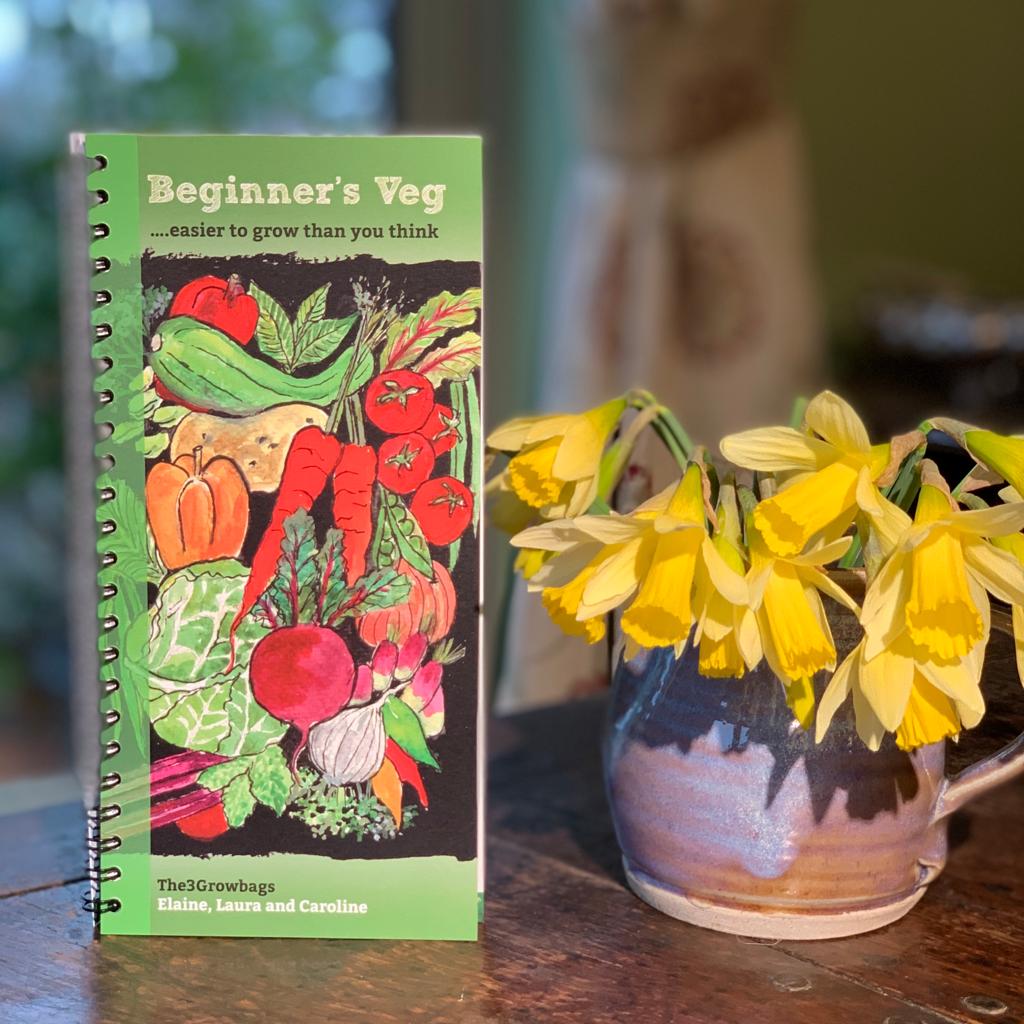
NB: If you’re new to The3Growbags, we are three sisters (Laura, Caroline and me, Elaine) who write about gardening once a week and enjoy a good laugh
